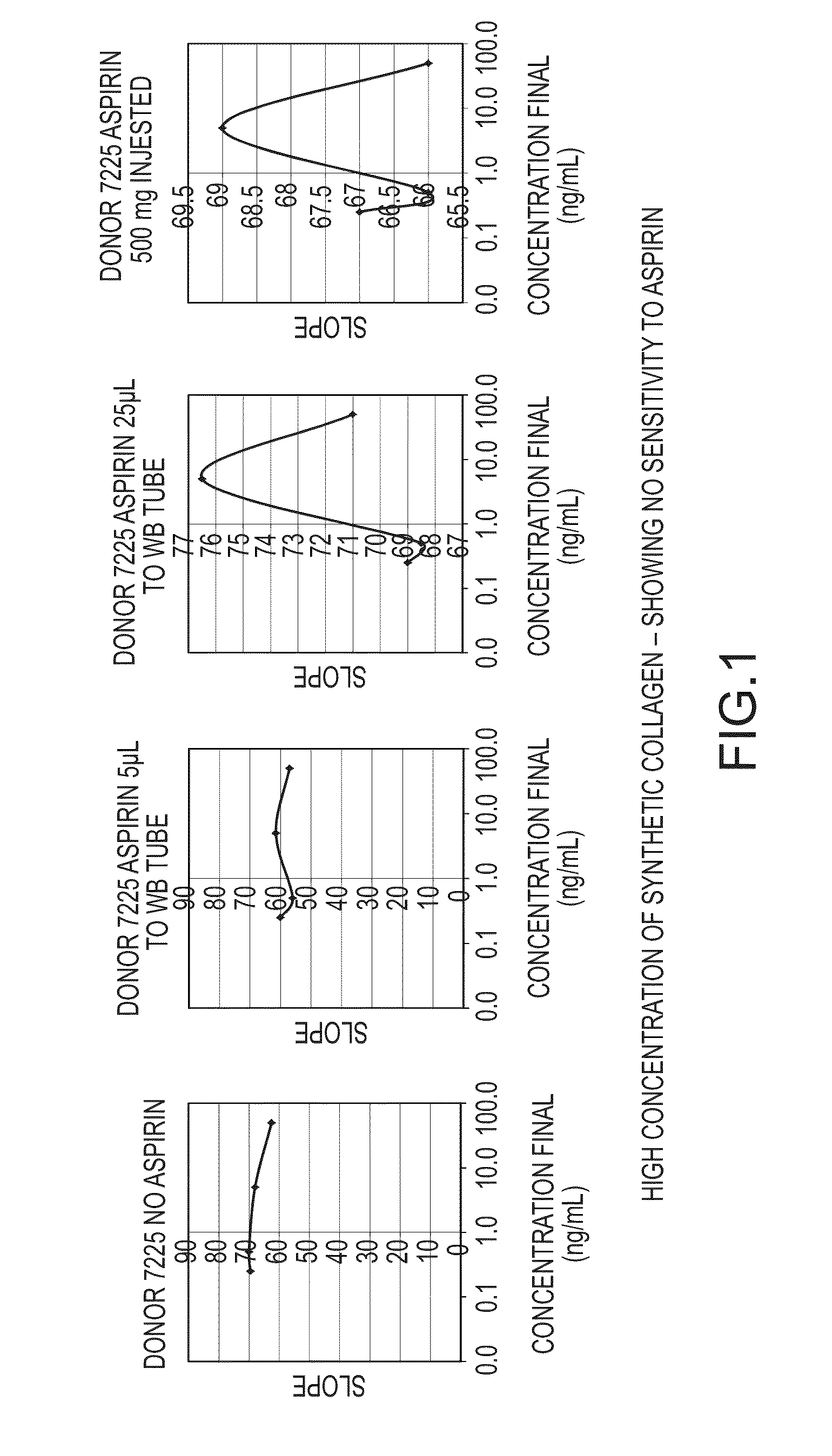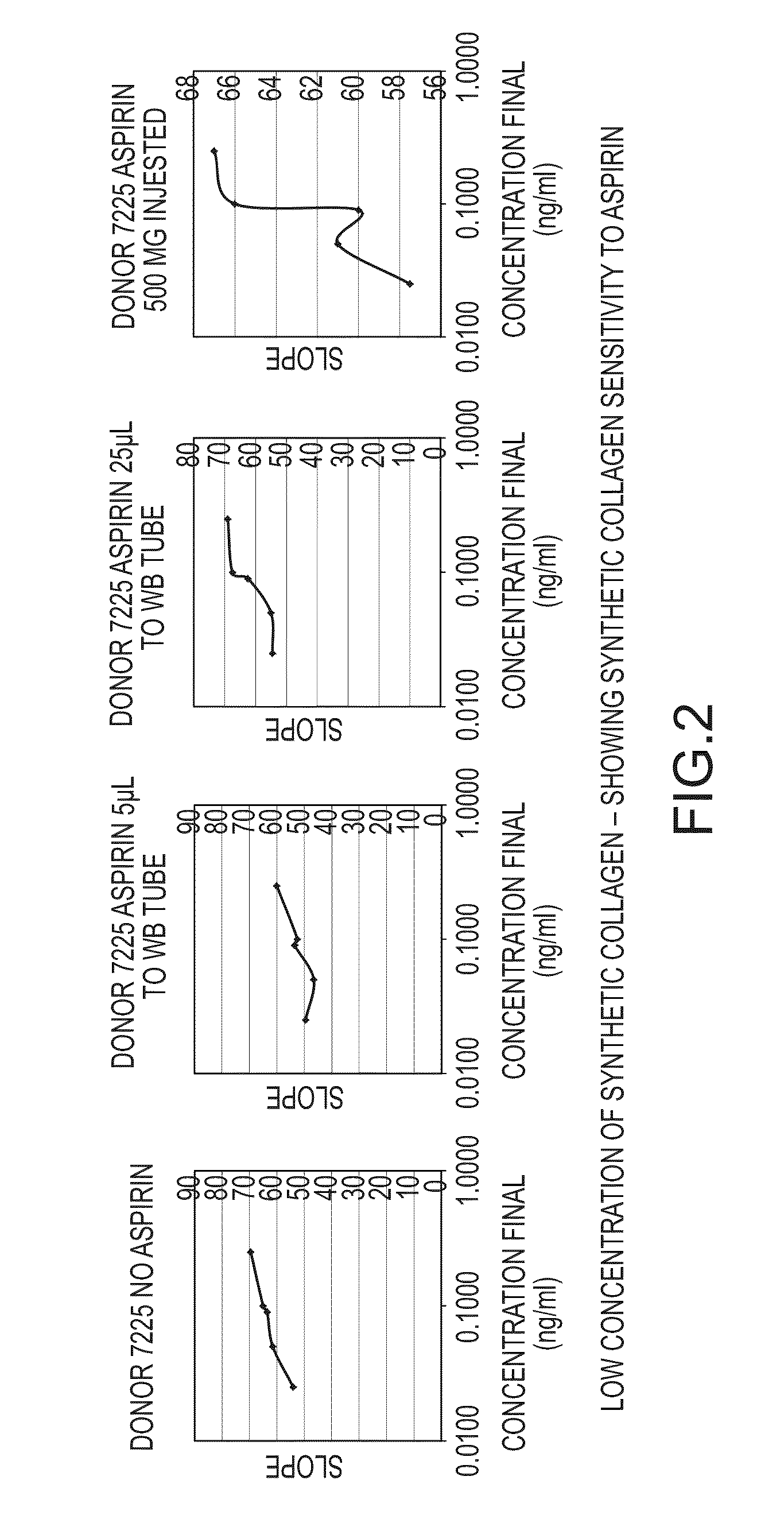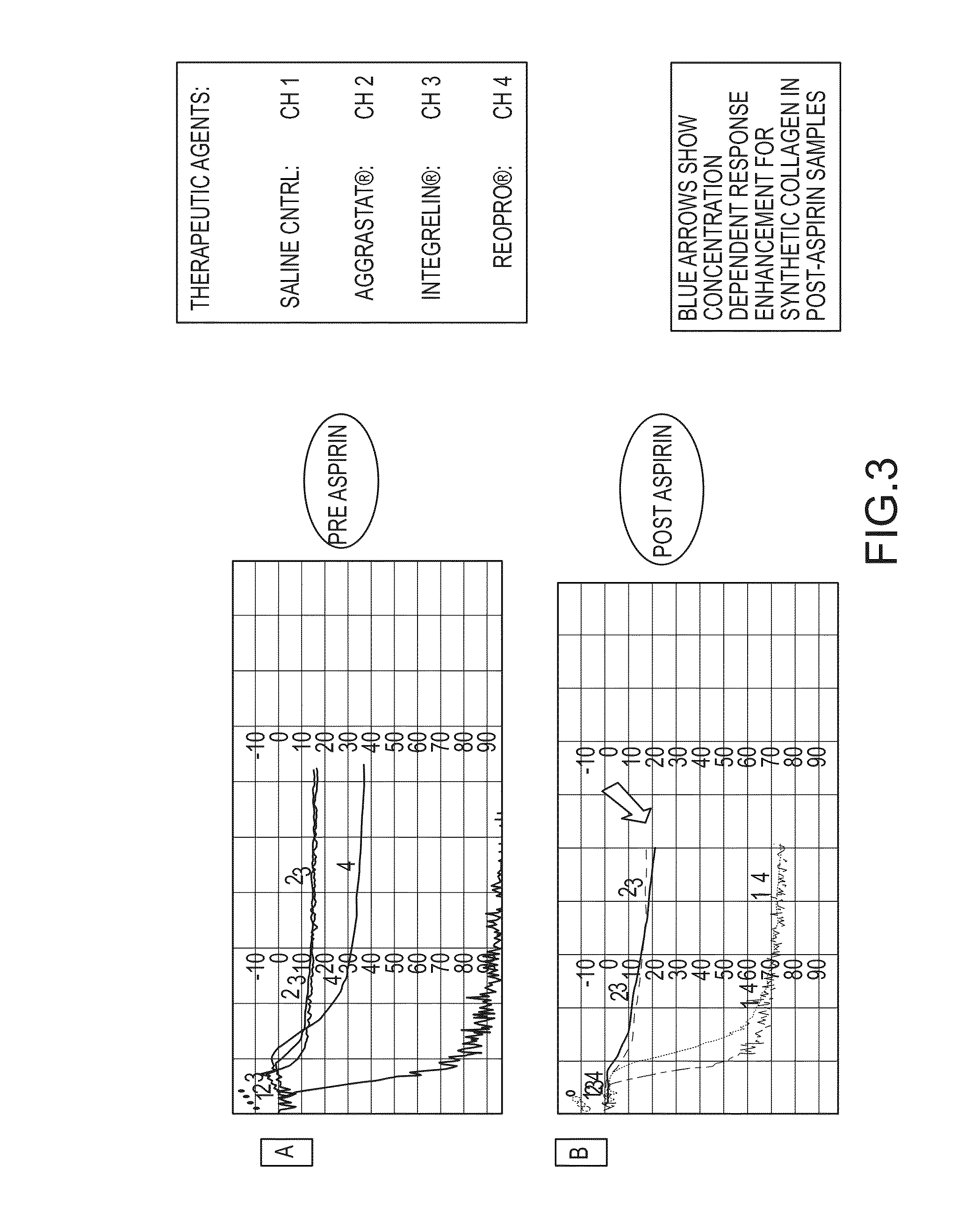Dual Anti-platelet medication/aspirin response and reactivity test using synthetic collagen
a technology of antiplatelet medication and aspirin, which is applied in the direction of biological material analysis, instruments, disease diagnosis, etc., can solve the problems of high residual platelet reactivity, ineffectiveness, and above the baseline risk of the patient in the tim
- Summary
- Abstract
- Description
- Claims
- Application Information
AI Technical Summary
Benefits of technology
Problems solved by technology
Method used
Image
Examples
example 1
Evaluate the Use of Synthetic Collagen to Detect the Antiplatelet Activity of Ticagrelor, Cilostazol and Abciximab in Normal and Aspirinized Human Platelet Rich Plasma
Materials: Antiplatelet Drugs
[0185]Ticagrelor (Brilinta®, Astra-Zeneca, London, UK; lot AL0153, expiration 02 / 14) was obtained as 90 mg tablets from the Loyola University Health System inpatient pharmacy. Tablets were ground using a mortar and pestle and subsequently dissolved in DMSO at a concentration of 10 mg / mL. The stock solution was diluted in deionized water to make working solutions of 0.5, 0.1 and 0.05 mg / mL.
[0186]Cilostazol (Pletal®, Otsuka Laboratories, Tokushima, Japan; lot 0B91M) was obtained as a powder. Cilostazol was dissolved in DMSO to make a stock solution of 5 mM. The stock solution was diluted in deionized water to make working solutions of 250, 125 and 50 μM.
[0187]Abciximab (ReoPro®, Eli-Lilly, Indianapolis, Ind.; lot 12D09AA, expiration 05 / 15) was obtained as a 2 mg / mL solution which was diluted ...
example 2
Testing for Platelet Aggregation Using LTAAs and Synthetic Collagen and Adding Anti-Platelet Medication to the PRP Sample
Abciximab (ReoPro®)
[0205]Two healthy donors supplied the PRP samples. A panel of four different synthetic collagen concentrations were tested (12.5 ng / mL, 25 ng / mL, 50 ng / mL and 100 ng / mL Abciximab was added to the each of the four panels of different synthetic collagen concentrations. In one panel, saline was added as the control to each of the four synthetic collagen concentrations. In the second panel, 12.5 μg / mL (micrograms / mL) of abciximab was added to each of the four synthetic collagen concentrations. In a third panel, 25 μg / mL of abciximab was added to each of the four synthetic collagen concentrations. In a fourth panel, 50 μg / mL of abciximab was added to each of the four synthetic collagen concentrations. LTAAs were run for each and the PA, PS, SA, SS AUC, LP, DA, MA and FA was measured for each. The tests were run on each of the donors' samples.
Ticagrel...
example 3
Use of Flow Cytometry to Test for Platelet Aggregation
[0210]A vial of Bio / Data calf skin collagen was reconstituted with 0.5 ml of water to make a 1.9 mg / ml solution. A vial of synthetic collagen was reconstituted with 1 ml of synthetic collagen diluent to make a 0.0005 mg / ml solution. Chrono Log collagen was diluted with saline to make a 100 μg / ml solution. A stock 2% paraformaldehyde solution was diluted with calcium-free Tyrode's buffer to make a 1% paraformaldehyde solution. A set of tubes containing 1 ml of 1% paraformaldehyde was prepared. A second set of tubes which contained 30 μl of collagen reagent and 30 μl of antiplatelet drug was prepared and set in a 37° C. heating block. Whole blood was drawn from healthy individuals into sodium citrate. 240 μl of citrated blood was added to the tubes at 15-20 second intervals and gently mixed. After a 3 minute incubation period, 50 μl of activated blood was transferred to the corresponding paraformaldehyde-containing tube. After a 30...
PUM
| Property | Measurement | Unit |
|---|---|---|
| concentration | aaaaa | aaaaa |
| concentration | aaaaa | aaaaa |
| concentration | aaaaa | aaaaa |
Abstract
Description
Claims
Application Information
 Login to View More
Login to View More - R&D
- Intellectual Property
- Life Sciences
- Materials
- Tech Scout
- Unparalleled Data Quality
- Higher Quality Content
- 60% Fewer Hallucinations
Browse by: Latest US Patents, China's latest patents, Technical Efficacy Thesaurus, Application Domain, Technology Topic, Popular Technical Reports.
© 2025 PatSnap. All rights reserved.Legal|Privacy policy|Modern Slavery Act Transparency Statement|Sitemap|About US| Contact US: help@patsnap.com



